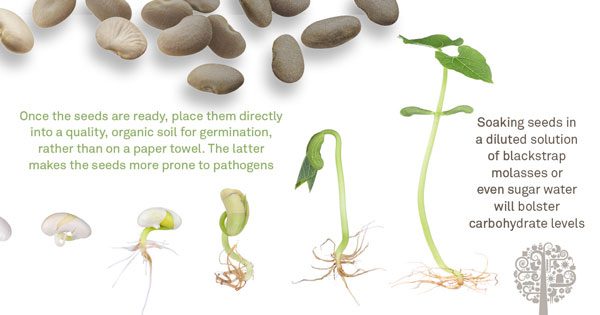There’s something exciting about finding some long-forgotten, rare seeds. Once you have them, the challenge is to revive those genetics, especially considering they’ve been sitting in someone’s tobacco tin, basement, or garage for decades. While they look like they could germinate, you don’t have many, and you want to make sure they sprout.
Is It Possible?
Yes! Even seeds that are thousands of years old can germinate. But proper pre-treatment is essential, and the older the seed, the less energy it has left in storage.
Seeds from annual plants aren’t often designed to last many years, part of what makes the germination process so tricky. With each trip around the sun, energy declines. Eventually, the embryo doesn’t have any juice left to break the seed coat and push through the soil to the surface.

To an extent, we can minimize this through proper storage in cool and dry environments. But even still, the passage of time inevitably wins.
Clean Beans
Aggressive tactics are often needed to give the seed a fighting chance. First, the seeds will need to be cleaned, minimizing any potential mold spores and pathogens that may be on the seed surface. Soaking the seeds in a 1 or 2% hydrogen peroxide solution for a few minutes cleans effectively while also providing slight chemical scarification to the seed coat, which has likely hardened over time.
Chemical Scarification?
For germination to occur, the embryo needs to be able to exchange oxygen with the outside world. The issue? Seed coats tend to harden over time, which prevents them from properly absorbing water and oxygen. While H202 can provide a chemical roughing, it’s often necessary to get a bit more surgical.
Mechanically scarifying seeds can be as simple as lightly sanding the micropyle (edge) with a piece of sandpaper (being careful not to go too far), or knicking a notch out of the seed coat with a utility knife. Cracking the seed coat carefully between a pair of forceps is another method. Many old-timers used to crack the seeds between their teeth!
Scrubbing In
Sometimes, you have to perform surgery to get a seed to germinate. Do this by entirely removing the seed coat and directly germinating the embryo by placing it on top of a quality propagating media kept evenly moist in a controlled environment. Steady hands and magnification are a must for this; small seeds mean delicate work! Often, this step alone is enough for seeds and should improve success rates.
Rejuvenation
To further ensure the best chance of germination, we can attempt to replenish some of the energy and hormones that have been lost over time. Soaking seeds in a diluted solution of blackstrap molasses or even sugar water will bolster carbohydrate levels. When added to the mix, kelp, fulvic acid, B vitamins, alfalfa meal, coconut water, and malted grain (especially barley) provide a considerable array of biocatalysts, including natural enzymes to wake the tired embryos and get them moving. Coconut water is notably used in plant tissue culture as food stock, which proves very useful for these purposes. Germination is an enzyme-driven process, which can be naturally supplemented by the above ingredients.
Once the seeds are ready, place them directly into a quality, organic soil for germination, rather than on a paper towel. The latter makes the seeds more prone to pathogens. Good soil should be brimming with healthy microbes. Direct planting also avoids injury to the initial taproot’s very fine feeder hairs during transplanting, further enhancing survival rates.
Don’t give up on older seeds; try to germinate them to see if they are as good as you remember.
Hi Cody
I am so excited to hear all what you have to say..
I found some alfalfa seeds that are 22 years old..they are in an airtight package.
Can I still sprout these?? The package is huge, and I don’t want to waste them if they are still good I want to be able to package them up and give them to my family members since we’re all Sprout fanatics. Anyway thank you. Looking forward to hear what you have to say
Hi,
Thank you for providing such valuable information.
Does this procedure work for the balloon vine seed of 30 years?
How to Regenerate Old molokhia Seeds??
Great article- thanks for the inspiration. My plan is to clean, scrub and rejuvenate. Q: how long would you soak the seeds in the rejuvenation mix?
Depends of the seed. A couple of hours at least.
I found 24 year old Rose of Sharon seeds from my late mom. Can I try and save and plant them. If so How?
How long in molasses solution? I found tomato seeds from 1990 in a house we just inherited!
Hi
Thanks for a very informative article.
I have about 50 Lipstick palm seeds ( Crytostachys Rena) and trying to germinate them.
Which method do you propose i should use to get the best results.??
I appreciate if you give me the step by step procedures.
I have access to Gibberellic acid, H2O2 , fungicides etc….
Already thank you for your kind guidance.
Very useful seed sprouting information. I’ve had problems with using older seeds.
A 27 year old basil seed grew with these tips.
That’s awesome news!
good ideas, but not enough detail
We will try and add more detail in future. Happy Growing!
What ratios are you using in your sugar water solution?
Thank you